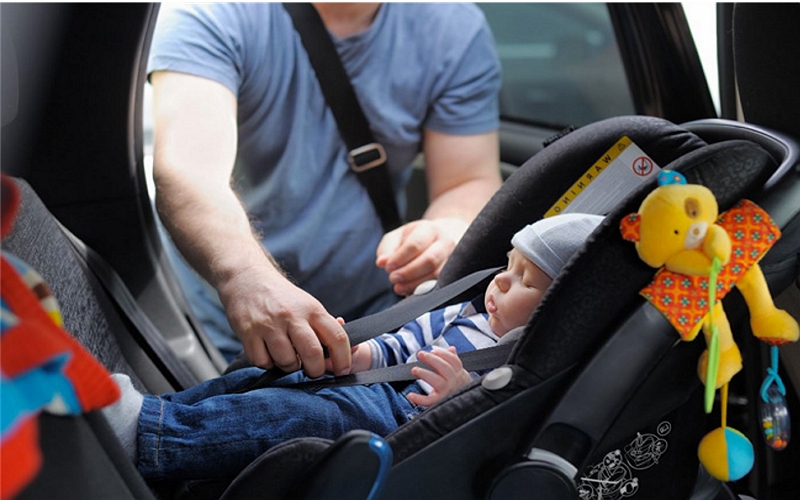How a newborn should sit in a car seat? A newborn should sit in a car seat with legs bent and support under the thighs.
The back of his head, neck, and spine must rest against the sidewall of the infant carrier. His hips should be level or higher than his knees to reduce pressure on his groin area.

As soon as your baby can hold up her head comfortably it is okay for you to place her rear-facing in an automobile seat that has been approved by its National Highway Traffic Safety Administration (NHTSA).
She will need to ride this way until she weighs twenty pounds or reaches age two. If your child’s feet touch down past the edge of the cushioning pad at all then re-adjust so they stay within those boundaries; if there isn’t much room for adjustment, try a bigger seat.
Should you swaddle in a car seat?
of course, not.
It is best to put your baby in the car seat before swaddling them because it keeps their arms secure and will make them feel more comfortable during a ride.
The car seat should be tightly secured to prevent any loose movement of the neck or shoulders around
Other things you need to keep in mind when putting your child into a rear-facing car set is legs out straight with a little bend, using lower harness slots so they have room for growth but continue staying safe enough, making sure chest clip buckle goes between their bottom ribs and belly button area.
Be careful with the amount of clothing they are wearing, making sure their face is clear from any straps or buckles for breathing space, and being careful with the length of time.
How do you wrap an infant car seat?
The handle of your infant car seat can be used to help you secure it in the backseat. However, if your vehicle is equipped with LATCH (lower anchors and tethers for children), use them instead so that you do not risk damaging the frame of the seat or causing injury by tugging on an attached strap while trying to get a tight installation.
If using only the base straps, start by placing each one at about shoulder level where they are close together under the baby’s shoulders. Make sure there are no twists in either part before pulling both ends out!
Once pulled tautly above baby’s head, connect their lower anchor connectors into place over his bottom – make sure each buckle snaps securely shut once installed.
Where should the straps be on an infant car seat?
Infant car seats come with different weight limits and height requirements. There are also various types of infant car seat harnesses on the market today.
While many parents choose to follow manufacturer’s guidelines regarding strap placement, it is important to be aware that this can vary from one infant car seat to another depending on the specific model you have chosen for your child.
Here we will discuss how each type works as well as what age ranges they generally apply to since there may be some confusion about exactly where a certain style should go when used by an older or younger baby than originally intended.
When can a baby be in a car seat longer than 2 hours?
If a baby is in a car seat longer than two hours, it can cause problems. This could lead to the child having serious breathing issues and even death.
In some cases, babies will be inside of their car seats for much more time each day. Parents may not realize how long they’ve been at work or when they are travelling from one destination to another that their children have been sitting in the same position for several hours straight without getting up or being fed properly.
If this becomes a habit, parents need to try and think about ways so that it does not happen again because little lives depend on them doing what is best for the well-being of their children!
At what weight can you face a car seat forward?
When a child is too big for a rear-facing car seat, it’s time to turn the convertible into a forward-facing one.
Can a 22-pound baby face forward in a car seat?
Absolutely! A 22-pound baby may face forward in a car seat. This is perfectly safe for babies to do. However, most convertible seats will not be able to accommodate them at this weight and age range because they are only meant for children who weigh less than 20 pounds (for rear-facing) or 30 pounds (for front-facing).
The infant carrier that you used with your newborn should work well until she reaches the maximum limits of the vehicle’s safety restraint system when it comes time to switch her out of her infant carrier into a bigger seat.
What materials are infant car seats made of?
Car seats are made of a variety of different materials depending on the brand and model. Some common types include:
Plastic is lightweight, durable, and easy to clean; however, it can become cold in colder weather when exposed without the baby’s body heat for warmth (which may be uncomfortable).
